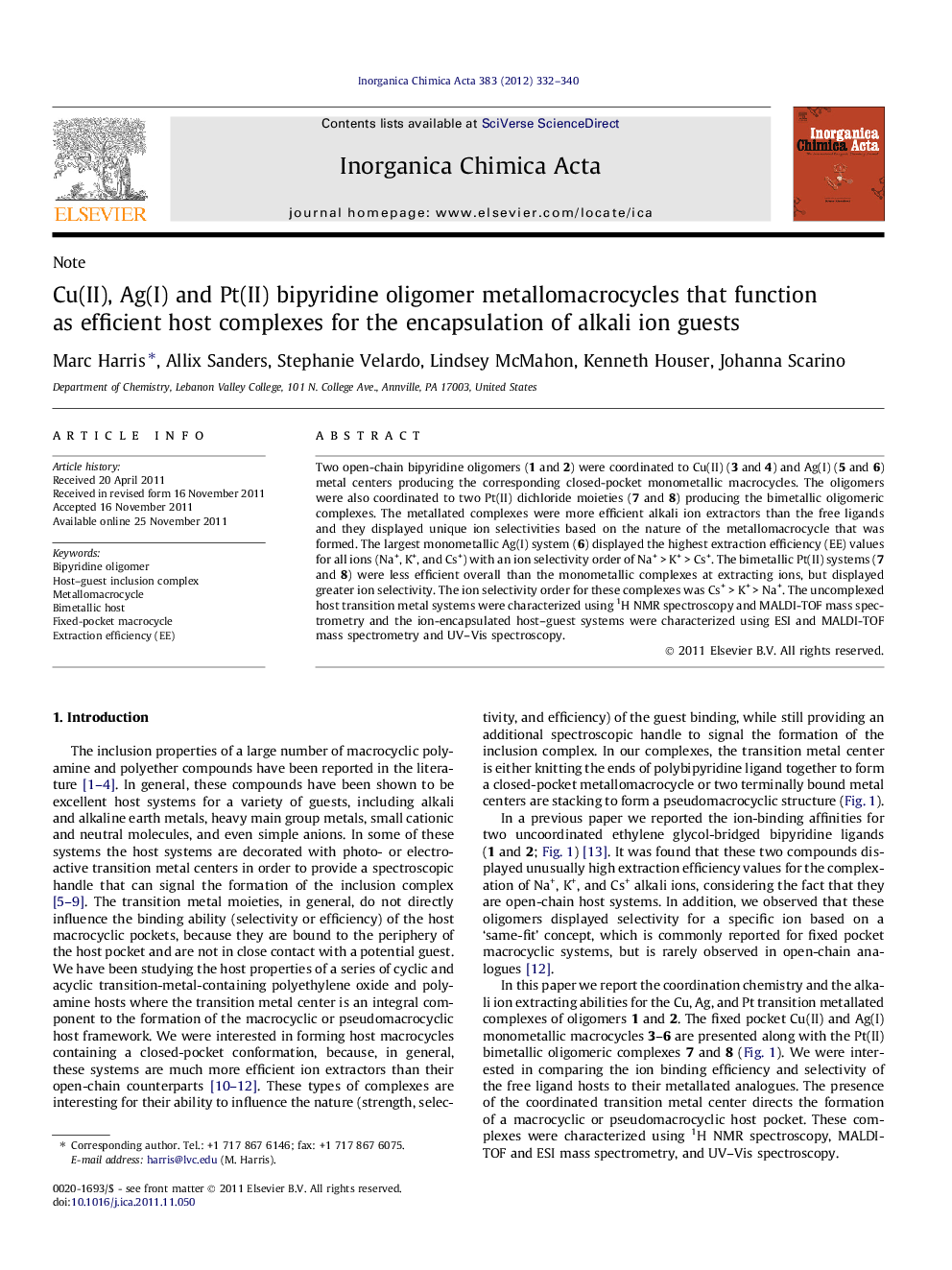| Article ID | Journal | Published Year | Pages | File Type |
|---|---|---|---|---|
| 1312512 | Inorganica Chimica Acta | 2012 | 9 Pages |
Two open-chain bipyridine oligomers (1 and 2) were coordinated to Cu(II) (3 and 4) and Ag(I) (5 and 6) metal centers producing the corresponding closed-pocket monometallic macrocycles. The oligomers were also coordinated to two Pt(II) dichloride moieties (7 and 8) producing the bimetallic oligomeric complexes. The metallated complexes were more efficient alkali ion extractors than the free ligands and they displayed unique ion selectivities based on the nature of the metallomacrocycle that was formed. The largest monometallic Ag(I) system (6) displayed the highest extraction efficiency (EE) values for all ions (Na+, K+, and Cs+) with an ion selectivity order of Na+ > K+ > Cs+. The bimetallic Pt(II) systems (7 and 8) were less efficient overall than the monometallic complexes at extracting ions, but displayed greater ion selectivity. The ion selectivity order for these complexes was Cs+ > K+ > Na+. The uncomplexed host transition metal systems were characterized using 1H NMR spectroscopy and MALDI-TOF mass spectrometry and the ion-encapsulated host–guest systems were characterized using ESI and MALDI-TOF mass spectrometry and UV–Vis spectroscopy.
Graphical abstractOpen (free host) and closed (ion-complexed) conformations of the platinum(II) bimetallic host–guest complexes. The guest alkali ion templates the formation of the pseudo-macrocyclic host pocket.Figure optionsDownload full-size imageDownload as PowerPoint slideHighlights► Ethylene-oxide-bridged bipyridine oligomers selective alkali ion extractors. ► Cu(II) and Ag(I) metallomacrocycle hosts more efficient ion extractors than free ligands. ► Pt(II) bimetallic pseudo-macrocyclic hosts more selective than monometallic analogues. ► Non-covalent host–guest complexes may be observed by ESI and MALDI-TOF mass spectrometry.
